Rocks can be a beautiful and practical addition to any landscape. They bring texture, contrast, and timeless appeal to gardens, pathways, and borders. But while stone can elevate your outdoor design, it’s easy to go overboard—turning what should be a natural enhancement into a cold, harsh, or cluttered space. The key to using rocks effectively is balance: knowing how to integrate them in a way that complements your plants and overall design.
Whether you’re dreaming of a low-maintenance yard or a polished garden aesthetic, here’s how to use rocks in landscaping without overdoing it.
1. Understand the Role Rocks Should Play
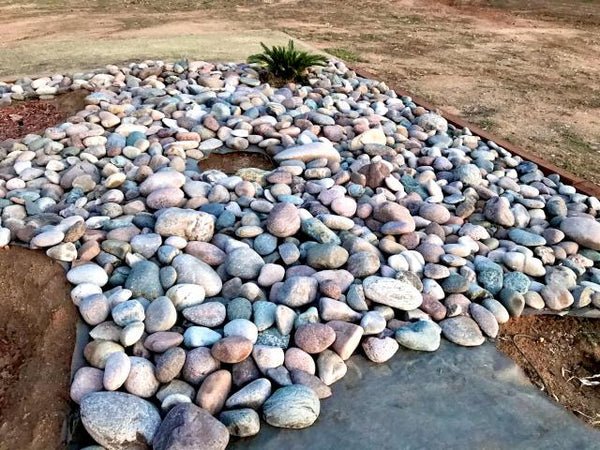
Before you start buying loads of gravel or boulders, decide what purpose the rocks will serve in your landscape. Are you using them decoratively, structurally, or functionally?
Common uses for rocks in landscaping include:
- Pathways and walkways: Smooth pebbles, flagstones, or crushed gravel create stable, natural-looking paths.
- Edging and borders: Rocks can neatly define flower beds, driveways, or patios.
- Erosion control: Larger stones or river rocks help prevent soil runoff on slopes.
- Accent features: A few well-placed boulders can add dramatic visual interest.
- Mulch alternatives: Gravel and crushed stone reduce weeds and conserve moisture.
Understanding your goal will help determine the right type, size, and amount of rock to use—and prevent you from overloading the space.
2. Choose Rocks That Match Your Landscape’s Natural Style
The best rock landscapes look like they’ve always belonged there. To achieve that effortless harmony, select rocks that complement your region’s natural features and your home’s design.
Tips for choosing the right rock:
- Color: Match or contrast subtly with your home’s exterior. For example, gray limestone pairs well with cool-toned homes, while warm sandstone suits earth-toned exteriors.
- Texture: Mix smooth river stones with rough boulders for visual depth, but avoid using too many competing textures in one area.
- Size variety: Combine different rock sizes (from gravel to boulders) for a more organic look. However, keep proportions balanced—don’t overwhelm a small garden with massive rocks.
If possible, source stones locally. Native materials not only look more natural but also blend better with the surrounding environment.
3. Use Rocks to Frame, Not Dominate
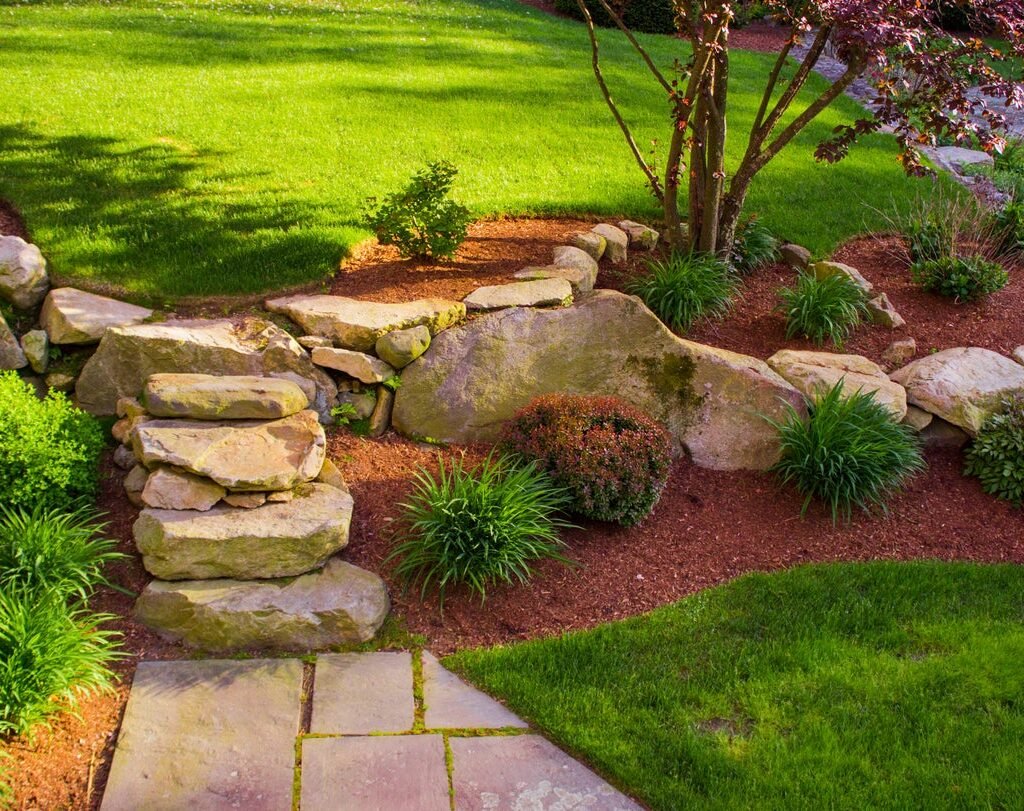
A common mistake homeowners make is letting rocks take over the landscape. Too many stones can make your garden feel dry, heavy, and lifeless. Instead, use rocks as a frame to highlight the living elements—plants, trees, and water features.
How to strike the right balance:
- Use rocks as borders for plant beds rather than filling the entire space.
- Pair stone pathways with soft plantings on either side, like groundcovers, ornamental grasses, or creeping thyme.
- Surround large boulders with low-growing greenery to soften edges and make the rocks appear naturally embedded.
- In xeriscapes or dry gardens, intersperse succulents, sage, and lavender among stones for color and contrast.
Remember, plants bring life and movement; rocks provide structure. Both are essential, but plants should always remain the star.
4. Layer Textures and Colors Thoughtfully
Just as a painter layers tones on a canvas, you can layer stone textures and hues to create visual depth. The trick is moderation—too many variations look chaotic, while too few appear flat.
Design strategies:
- Use one dominant rock type and complement it with one or two accent stones for contrast.
- Create gradients by transitioning from larger stones to finer gravel as you move outward from a focal point.
- Combine light and dark tones sparingly for definition—dark lava rock, for example, can make bright plants pop, while pale limestone reflects sunlight beautifully.
- Repeat stone types throughout your yard for cohesion. Consistency ties everything together.
5. Incorporate Rocks Into Functional Features
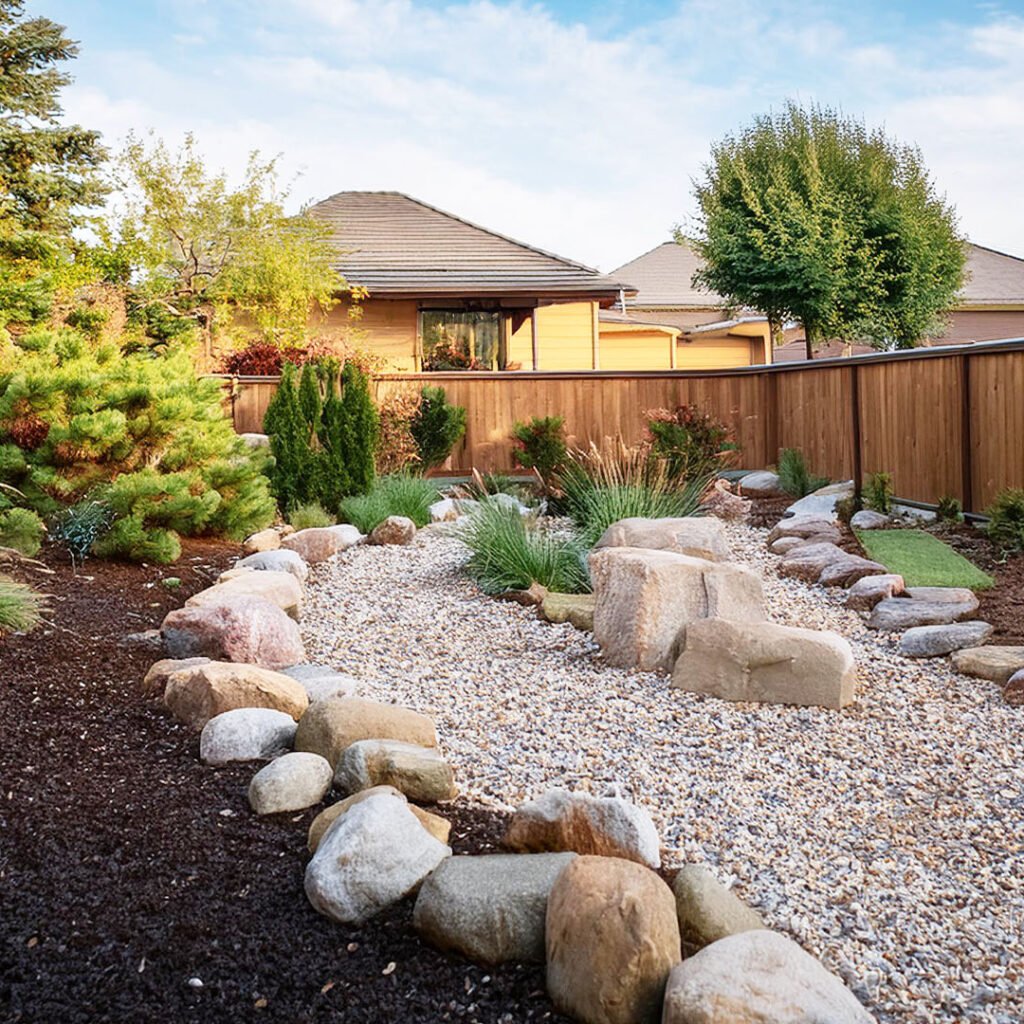
Using rocks for practical purposes makes them feel intentional rather than ornamental excess. Look for opportunities to combine form and function.
Functional rock ideas:
- Rock drainage channels: Line trenches with river rock to manage rainwater and prevent erosion.
- Stone seating walls: Create casual, natural benches using stacked stone.
- Fire pits or outdoor kitchens: Use large flagstones or lava rocks to add rustic character.
- Stepping-stone paths: Flat stones laid through grass or gravel give a clean yet informal look.
These elements serve a purpose while enhancing the design—ensuring your rocks don’t look like random clutter.
6. Balance Hard and Soft Landscaping Elements
A visually pleasing garden balances “hardscaping” (rocks, pavers, walls) with “softscaping” (plants, grass, mulch). Too much hardscaping makes your yard feel lifeless; too much greenery can look messy or unstructured.
Achieving balance:
- For every area dominated by rock, include nearby plantings to soften the look.
- Use curved lines instead of rigid patterns for rock beds and pathways—natural shapes feel more organic.
- Add water features like small ponds or fountains; the fluid motion contrasts beautifully with solid stone.
- Play with scale and proportion—small pebbles around a patio, medium rocks in beds, large boulders as standalone features.
When in doubt, step back and evaluate from a distance. If the landscape feels heavy or overly symmetrical, scale down the rock elements.
7. Use Rocks Sparingly as Focal Points
If you want to make a statement, focus on a few key features rather than scattering stones everywhere. This keeps your yard elegant and cohesive.
Effective focal point ideas:
- A single striking boulder surrounded by flowering plants.
- A small rock garden tucked near a patio or walkway.
- A minimalist gravel bed with ornamental grasses and a sculptural accent.
- A Zen-inspired corner with carefully placed smooth stones and sand patterns.
Limiting focal areas helps prevent visual overload while drawing attention to the most beautiful details.
8. Combine Rocks With Complementary Materials
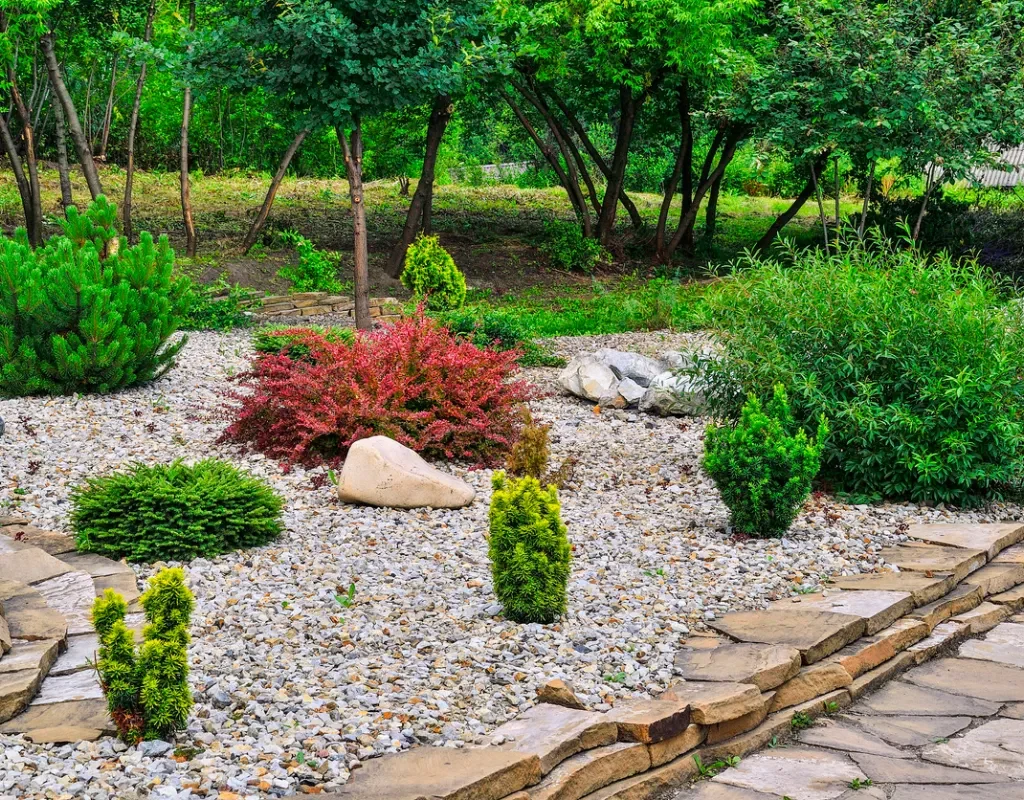
Rocks look best when contrasted with other textures and surfaces. Pairing them with wood, metal, or greenery keeps the landscape visually dynamic.
Material combinations that work well:
- Wood and stone: Timber edging or pergolas soften rugged rock features.
- Metal and gravel: Rust-colored steel planters or edging blend seamlessly with neutral stones.
- Grass and flagstone: Interspersing grass between stepping stones adds movement and color.
- Water and rock: A small trickling water feature flowing over stones enhances tranquility and appeal.
Mixing materials keeps your landscape warm and balanced—never stark or monotonous.
9. Don’t Forget Maintenance
Rock features may seem low-maintenance, but they still require care. Without upkeep, debris builds up, weeds sneak through, and rocks shift over time.
Maintenance essentials:
- Install weed barriers under gravel or river rock beds.
- Rake or sweep gravel occasionally to maintain even coverage.
- Reposition stones that sink or tilt after heavy rains.
- Clean algae or moss from shaded rocks with a mild vinegar solution.
Regular care ensures your rock features remain beautiful and tidy rather than messy and overgrown.
10. Less Is More
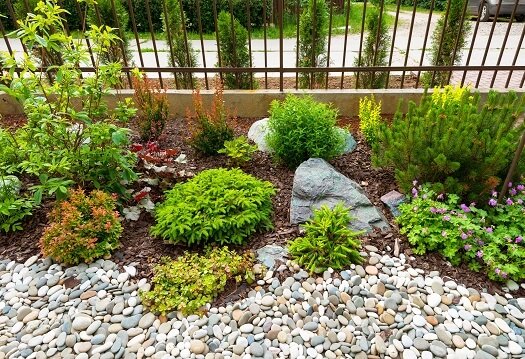
Ultimately, the secret to using rocks successfully in landscaping is restraint. Every stone should have a purpose—either aesthetic or functional. Overloading your yard with rocks can make it look artificial and unwelcoming.
Before adding more stone, ask yourself:
- Does this rock enhance or compete with the plants?
- Does it fit the overall color palette and style?
- Does it serve a purpose—visual or practical?
If the answer is no, it’s best left out. A little stone goes a long way toward creating texture, balance, and timeless appeal.
Final Thoughts
Rocks can transform a simple yard into a serene, elegant landscape when used thoughtfully. The goal isn’t to fill every space with stone but to integrate it naturally with greenery, soil, and water.
By defining clear purposes, choosing the right materials, balancing soft and hard elements, and maintaining proportion, you can design a landscape that feels both sophisticated and welcoming. With mindful placement, your rock features won’t overwhelm—they’ll elevate your outdoor space into a scene that feels effortlessly natural and beautifully composed.
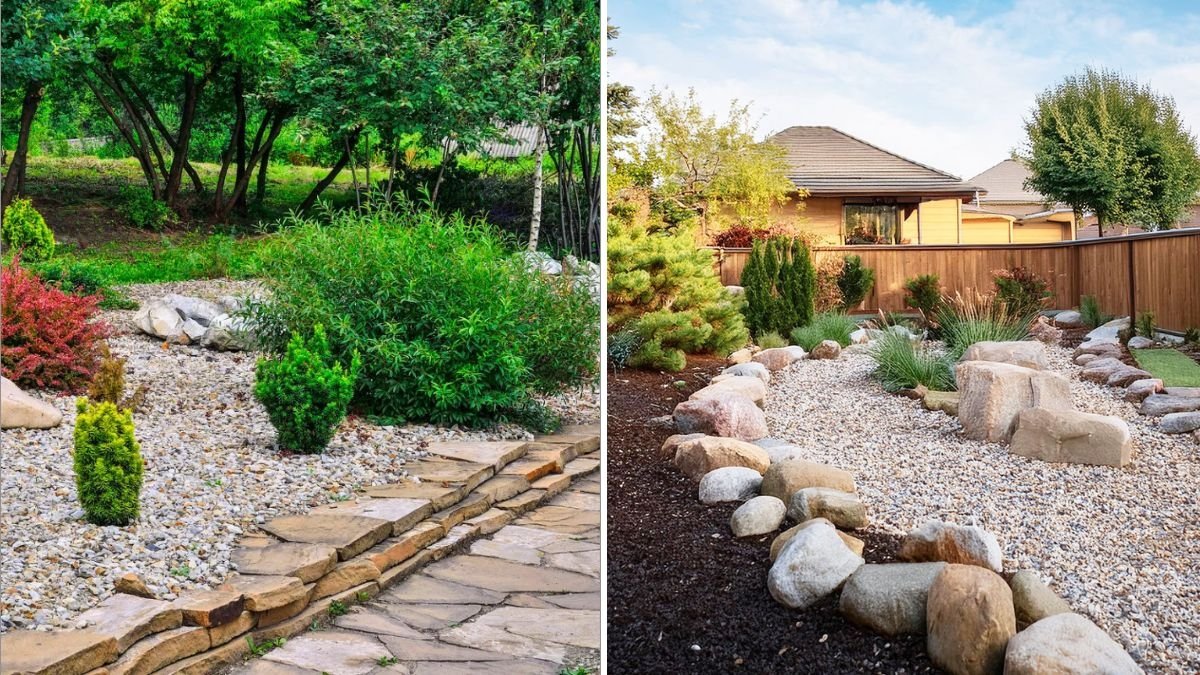





Leave A Comment